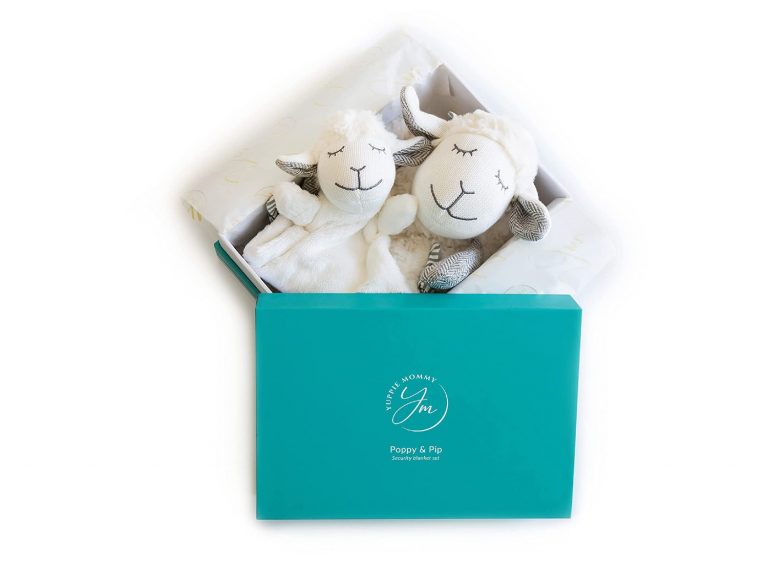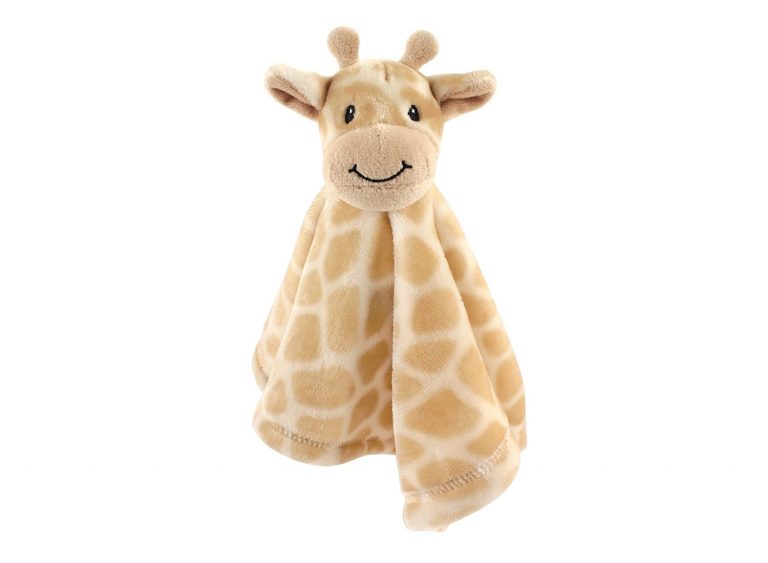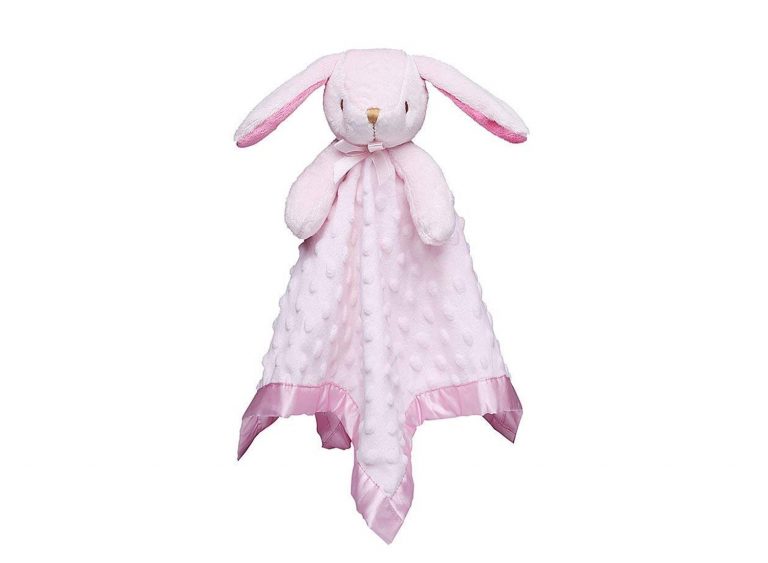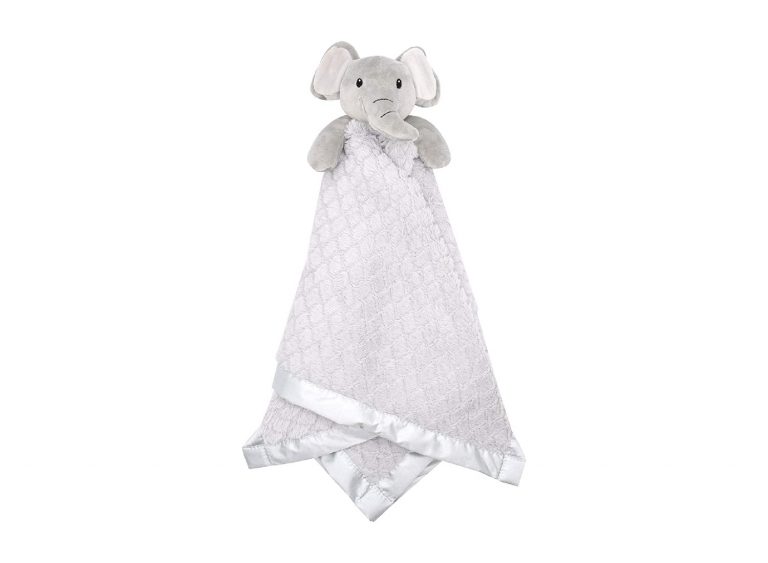Cute and Cuddly: The Best Security Blankets Out Now
It’s a tough world out there and everyone could use a little extra security and comfort. Growing up isn’t easy, especially not when you’re still learning how the big bad world works. A security blanket, also known as a ‘blankie’, can offer your little one some peace and reassurance in their time of need.
If you’re wondering how a small blanket can achieve such magical results, or if it really is a good thing to have one, you’re in good hands. We’ve looked at some of the leading security blankets in 2024 and the features that make them desirable. In this guide, we don’t only reveal our top picks, but also dig into the science behind the security blanket. We’ll lay out the pros, cons, and how to get the best out of your little one's soft and snuggly new BFF.
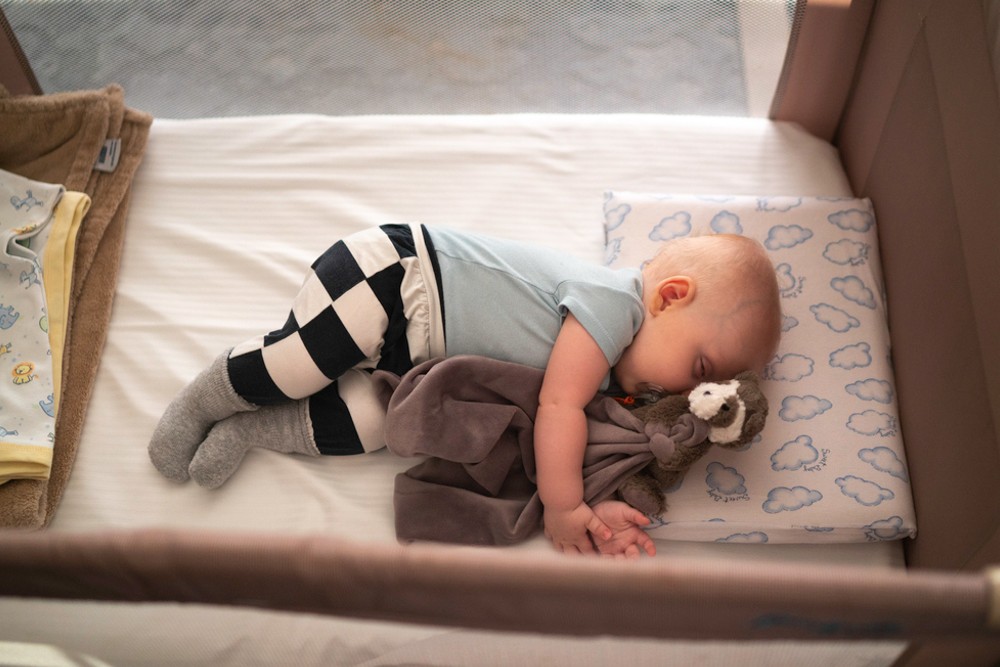
Our Top Picks for the Best Security Blankets of 2024
- Yuppie Mommy Security Blanket: Best Overall (shop now)Read more about this ↓
- Hudson Baby Security Blanket: Unisex Blanket (shop now)Read more about this ↓
- Pro Goleem Security Blanket: Blanket for Girls (shop now)Read more about this ↓
- Burt's Bees Baby Security Blanket: Organic Cotton (shop now)Read more about this ↓
- Everyday Kids Security Blanket: Large Lovey (shop now)Read more about this ↓
Finding a Great Security Blanket: A Buyer’s Guide
Whether your child is learning to fall asleep without you or going to their first day of school, separation can set off a great deal of anxiety. Having something by their side that is familiar when you can’t be there can ease their distress.
The thing with a security blanket is that not any blankie will do. So how do you choose that special blankie? And what happens when it goes missing? There are fool-proof ways to let your toddler have a blankie as a healthy part of their development. Thankfully, we’ve assembled a useful guide to answer all your questions.
What Is a Security Blanket?
A security blanket is a small soft, snuggly blanket that babies or toddlers use for emotional support. Their special blanket doesn’t only feel luxurious, but it makes them feel safe because it’s a familiar object. Some kids have a beloved teddy or stuffed animal that offers them the same sense of security.
While some parents are concerned that their children will become too attached to their blankets, most outgrow them. We will, however, cover some tips to avoid unhealthy attachment if this is a concern.
The Psychology Behind the Security Blanket
Around 6 to 7 months old, babies start recognizing that they exist as separate beings from their parents. Infants may start to cry when a parent or caregiver leaves a room and can experience separation anxiety. Although distressing for both the child and the parent, this is a completely normal and natural part of every child’s development.
A baby security blanket can be of great help during this stage, almost acting as a stand-in for when you need to leave and helping your child make connections beyond their parents. It can also serve as comfort during other stressful times such as teething, changing to a new bed, or switching from a bottle to a training cup.
A blankie can be a confidence booster, too! Heading into a strange playgroup or spending time with a new caregiver can be completely overwhelming. Having that sense of security offers great relief and helps them work through emotional distress quickly. This extra bit of confidence helps them explore, take more risks, and grow. By taking small risks, children will feel free and unafraid to transition to doing new things as they grow and change.
How To Use a Security Blanket
If a blanket can give so much security, won’t losing it cause even more anxiety? Here’s the crux of the security blanket. Just as your child becomes anxious when learning to cope without you for certain periods, they will also get very distressed when their blanket is removed. By using the blanket only at key times you can avoid this and still use it as a healthy tool in their emotional development.
For example, reassure your child that the blanket will be waiting for them when it is nap time as opposed to having them carry it all day. When it is not being used, place it somewhere where they have easy access to it for emotional support.
Blankets or special toys are meant to be transitional objects. Once the transition is made, they should feel more confident in themselves to get through distressing moments without the object. When they’re ready to let it go, give them the freedom to do so.
How Not To Use a Security Blanket
For safety reasons, babies under 12 months should not have any items in their crib while sleeping. This includes a security blanket or toy. If they’re under 1 year, include the blanket in playtime, when meeting strangers, and take it with you while running errands instead.
In these early months, avoid using the blankie when your baby is hungry, uncomfortable, or scared. After all, you want it to be associated with positive and happy moments.
What To Look For in a Security Blanket
Fabric
Before choosing a blanket, consider the type of material it is made from. Ultimately you want it to be ultra soft and comforting, but still safe.
Also, remember that babies are discovering new textures every day — a blanket with a few different soft textures can keep them interested and stimulate their senses. Satin trims can be cool while knots can be ideal for teething or grabbing onto. Many blankets are double-sided featuring a very fluffy front with a softer, thinner back.
Safety
Your baby is extra sensitive to chemicals while their lungs and respiratory organs are still developing. Where possible, opt for an organic fabric because it’ll be pesticide-free. Steer clear of harsh dyes, chemicals, and anything that has been coated with wrinkle guard or stain guard. We know that going for a stain-proof fabric sounds like a brilliant idea, but the chemicals can be harmful, especially since they are constantly near your little one’s face.
Pure cotton is breathable and one of the safest fabrics you can choose for your baby or toddler. It is also hypoallergenic, which is another important feature to look out for.
Easy to clean
After going through all the trouble of choosing safe, chemical-free materials, it is important to keep up with the blankie’s hygiene by ensuring that it stays clean and germ-free. This companion can pick up germs pretty quickly since it will likely be dragged on the floor, drooled on, and receive a few splatters of food.
Choose a blanket that is durable and can withstand many cycles in the washing machine without falling apart. If you live in a damp climate, you may want to look for something that’s tumble dryer friendly too. It shouldn’t leak out colors and should retain a soft texture after washing.
Replaceable
We highly suggest you skip the sentimental item you have in the cupboard and stock up on something replaceable. In fact, we recommend buying two from the very beginning. Blankies often get torn or go missing — you’ll need an identical backup, so don’t wait for misfortune to strike. An item that can easily be replaced should be your first choice.
Size
The ideal security blanket size is 12 to 14 inches, but there’s no right or wrong size. Essentially, you want something easy for your baby to hold and that offers comfort without smothering them. It should fit into your stroller or diaper bag with ease.
Extra features
While a bunch of extra features such as cute buttons, fringes, or ribbons may look cute, they aren’t necessarily the best options in terms of safety. Avoid any loose tassels that babies can get tangled in. Hard objects such as buttons that can cause scratches are also best avoided.
Some blankets have toys attached to them, such as teething chews. Although these are great for teething, we recommend you get one without any hard attachments. Hard accessories can result in injuries while sleeping, won’t be comfortable to cuddle, and can be somewhat bulky.
Blankets with small plush toys attached to the top are a great option. They’re soft and big enough to be safe, cute, and cuddly.
Fur Babies and Security Blankets
The surprising thing about security blankets is that they’re not only used and loved by toddlers; you’ll often find that your dog can get similarly attached to one. Some dogs suffer from separation anxiety when their owners leave home or find it stressful to travel to new places. A security blanket can help your pup handle these situations.
Some pups carry their blankets everywhere. If your pup learns that a specific blanket is theirs, they’ll most likely be comfortable in new settings as long as the blanket comes along. In fact, blankets are often used similarly to service dogs. By placing the dog’s blanket down, it indicates to the pup where he should lie down, whether on an airplane, in a restaurant or at a social gathering.
As with babies, when introducing the blanket to your dog, you want to associate it with positive things. Place the blanket on your lap when the dog comes to sit with you or put treats on the blanket. Take it with you to different areas in the house where your pup will spend time with you.
Once your pup is familiar with the blanket, it can serve as a sense of security when you leave the house. Make sure it’s close by when you are not. If you ever need to replace their blanket, sleep with it for a night so that it has your scent before giving it to your pup. The whole reason they get attached to their blankie is that it carries a hint of you.
Yuppie Mommy Security Blanket
Best OverallMeet Poppy and Pip, our favorite security blanket lambs from Yuppie Mommy. These two cuties are beyond adorable, but that’s not the only reason they made our top pick. The blankets are made from an ultra-soft, safe, cotton, and polyester blend, providing unmatched comfort. Even better, they are machine washable for easy cleaning and feature a pacifier tie.
Poppy may be somewhat bigger than Pip, but each lamb is ideal for both little boys and girls. Their friendly faces and soft huggable arms beg to be cuddled, making them the perfect ready-packaged gifts for new parents (and their babies). Because of their charming design and soft, safe construction, we’ve picked these security blankets as the best on our list.
- Includes two blankets with attached plush toys
- Arrives in a beautiful gift box
- Lightweight, breathable cotton blend
- BPA-free and non-toxic
- Softness fades slightly over multiple washes
Hudson Baby Security Blanket
Unisex BlanketThis plush animal-themed security blanket from Hudson’s will become your baby’s new best friend in no time. Whether it is naptime, bedtime, or playtime, don’t be surprised if this little blanket is in demand. The cuddly toy is attached to the center of the blanket, while the super soft polyester fabric offers a gentle touch against your baby’s skin. It comes at an ideal 14-inch size, which makes it easy to carry around without becoming a hassle. Simply choose one of the multiple animal designs and your little one will have a blast!
- Great price point
- Machine washable
- Stays soft and intact after washing
- Only includes one blanket
Pro Goleem Security Blanket
Blanket for GirlsThis gorgeous dual-layer security blanket from Pro Goleem is the perfect gift for baby girls. It comes in a variety of fun animal designs that your child will love — some even feature arms for loads of snuggles! Further, the top minky fabric stimulates the baby’s sense of touch, while the bottom satin side is smooth and soft against the skin. Best of all, small hands can easily grab the ears or arms for comfort while the blanket provides warmth when needed.
- Machine washable on gentle cycle
- Arrives in a clear gift box, ready to gift
- Multiple fabrics offer sensory stimulation
- Ears make a crinkly sound
Burt’s Bees Baby Security Blanket
Organic CottonSince Burt’s Bees blankies are made from organic cotton, you can be assured that they’re perfectly safe against your baby’s skin — the soft design is even safe for teethers! Even better, the interior is lightly stuffed with 100% polyester filling, offering a comfy and warm feel.
This security blanket is small with a 3-inch bee attached, which is ideal for tiny hands to grab, and each corner features a knot for tugging and even soothing gums. Meanwhile, its light yellow color makes this a perfect unisex gift for new parents.
- Organic certified and chemical-free
- Machine washable
- Durable yet delicate
- Toddlers may prefer a bigger toy
Everyday Kids Security Blanket
Large LoveyThis oversized security blanket is big enough to wrap your baby up or just to offer some comfort with some fun animal snuggles. Everyday Kids has designed a luxuriously soft and fluffy security blanket with a silky bottom trimming, allowing your baby to feel different textures. The top is adorned with a soft dog, elephant, or cat plush toy with floppy arms and ears. Play hide and seek with this new animal companion under the blanket or simply let the two new friends take a nap together in blissful comfort.
- Machine washable and tumble dry-friendly
- Available in three animal designs
- Very soft and warm
- Larger than most security blankets
People Also Asked
A: This will depend on how often you use it and the abuse it undergoes. Some blankies get dragged along the floor, drooled on, and receive a fair amount of food splatter. Every three to seven days for mild use is recommended. Make sure it gets a wash if your baby or toddler is sick. Also, having a clean backup on hand it’s a good option — this allows you to rotate security blankets when one is in the wash.
A: A child’s need for their blankie peaks between 18 and 24 months. After this, it may start to fade. Many kids give up their security blanket between 3 and 5 years, but there’s no hard and fast rule.
A: A blankie or plush toy can be introduced from 3 months of age and up. Even introducing it at around 12 months is a good time. But, when your baby is under 1 year, they shouldn’t sleep with a blankie or plush toy at night to prevent choking or suffocating hazards.
A: If you feel that it’s time for your child to start letting go of their blanket, start slowly. If your child wants to take the blanket to school, suggest a compromise. Have them take it but leave it in their locker or bag for the whole day. As a next step, encourage them to leave it at home. You can then continue in slow, fair increments until your child has been fully weaned off it!
